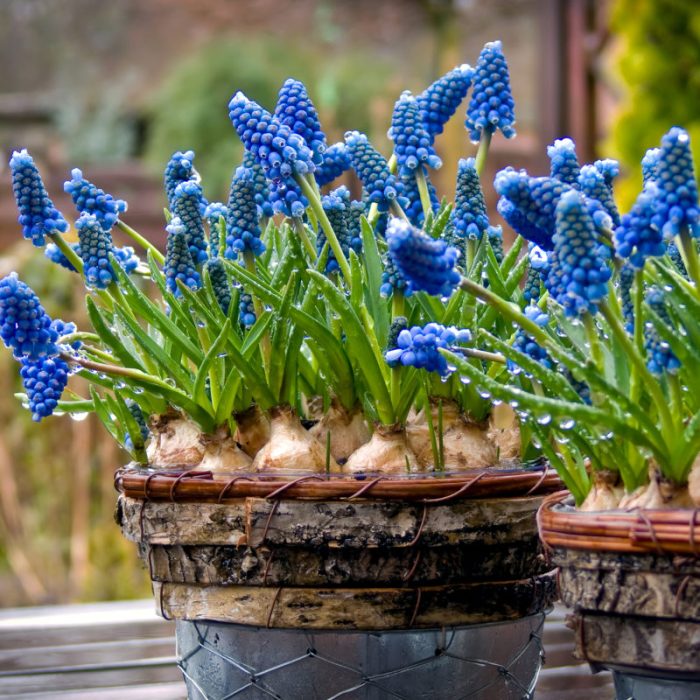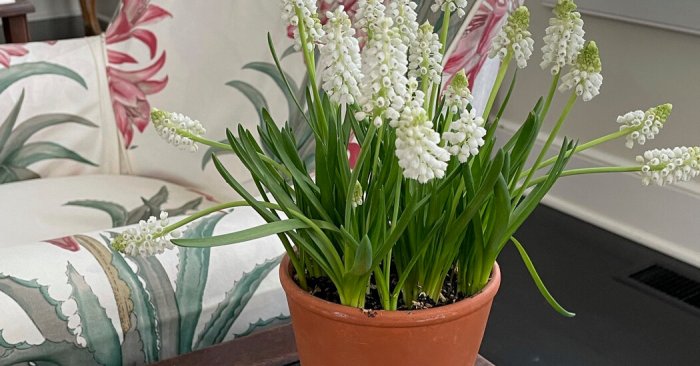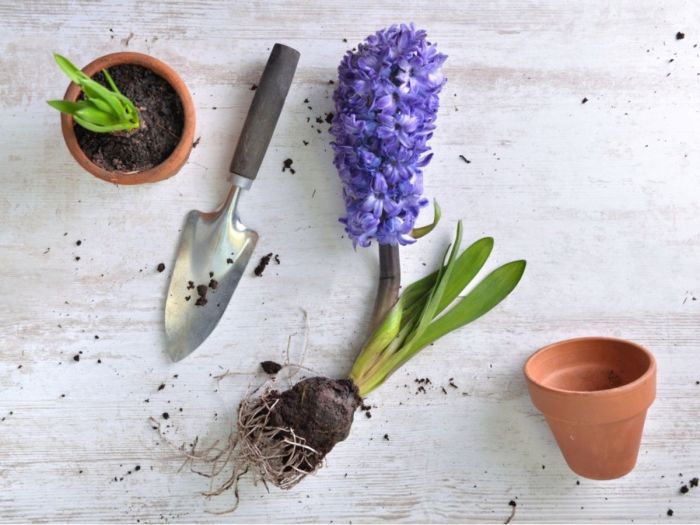Force bulbs to flower in winter, defying nature’s schedule and bringing vibrant blooms to the cold, dreary months. Embark on this horticultural adventure as we delve into the secrets of coaxing these dormant gems into early bloom.
From understanding the process to troubleshooting common challenges, this comprehensive guide empowers you to create a winter wonderland of fragrant flowers.
Environmental Factors Affecting Bulb Forcing

For successful bulb forcing, understanding the environmental factors that influence bulb growth and flowering is essential. Temperature, light, and water play crucial roles in the forcing process, and monitoring and adjusting these factors will ensure optimal conditions for vibrant and healthy blooms.
Temperature
- Most bulbs require a period of cold temperatures, known as vernalization, to initiate flower bud formation. This cold treatment typically lasts for 8-12 weeks and is provided by storing bulbs at temperatures between 35-45°F (2-7°C).
- After vernalization, bulbs should be moved to warmer temperatures to promote root growth and flower development. The ideal temperature range for forcing is between 60-65°F (16-18°C).
- Fluctuating temperatures or extreme heat can stress bulbs, leading to poor flowering or stunted growth.
Light
- Bulbs require light for photosynthesis, which provides the energy needed for growth and flowering.
- The amount of light required varies depending on the bulb species. Some bulbs, like daffodils, prefer bright, indirect light, while others, like hyacinths, can tolerate lower light levels.
- Insufficient light can result in weak or leggy growth, while excessive light can scorch the leaves.
Water
- Bulbs need a moist but not soggy growing medium. Overwatering can lead to bulb rot, while underwatering can stunt growth and reduce flowering.
- Water bulbs deeply and allow the soil to dry out slightly before watering again.
- Good drainage is essential to prevent waterlogging.
Troubleshooting Common Problems

Forcing bulbs to flower in winter is a rewarding experience, but it can also present some challenges. Here are some common problems that you may encounter and how to solve them:
Bulbs Not Flowering
* Cause:The bulbs may not have received enough cold treatment.
Solution
Ensure that the bulbs are exposed to cold temperatures for at least 12 weeks before planting.
Cause
As the winter chill sets in, I find solace in the vibrant blooms of forced bulbs. With a little care and attention, you can enjoy these beautiful flowers indoors throughout the season. For those who live in areas with harsh winters, a garage can provide the perfect environment to force bulbs.
Whether you have a detached garage, an attached garage, or even a carport, there’s a type of garage that can meet your needs. Learn more about the different types of garages to find the best one for your home. With a little planning and preparation, you can create a winter wonderland filled with the beauty of forced bulbs.
The bulbs may have been planted too deeply.
Solution
Plant the bulbs with the tips just below the soil surface.
Cause
The bulbs may be diseased or damaged.
Solution
Inspect the bulbs before planting and discard any that are soft or moldy.
Bulbs Flowering Too Early or Late
* Cause:The bulbs may have been exposed to warm temperatures too soon.
Solution
Keep the bulbs in a cool, dark place until you are ready to plant them.
Cause
The bulbs may have been planted at the wrong time.
Solution
Refer to the planting guide for the specific bulb variety you are forcing.
Cause
The bulbs may not have received enough light.
Solution
Provide the bulbs with at least 6 hours of sunlight per day.
Pests and Diseases
* Cause:Aphids, mealybugs, and spider mites can infest bulbs.
Solution
Treat the bulbs with an insecticidal soap or neem oil.
Cause
Fungal diseases, such as botrytis and fusarium, can also affect bulbs.
Solution
Remove any infected bulbs and treat the remaining bulbs with a fungicide.
Creative Uses for Forced Bulbs: Force Bulbs To Flower In Winter

Forced bulbs are a beautiful way to add color and life to your home during the winter months. They can be used in a variety of creative ways to create stunning displays that will brighten up any space.
Here are a few ideas for using forced bulbs for decorative purposes:
Indoor Displays, Force bulbs to flower in winter
- Force bulbs in a variety of colors and shapes to create a beautiful centerpiece for your table.
- Plant forced bulbs in a shallow dish filled with pebbles or marbles. Add water to the dish and place it in a sunny spot.
- Force bulbs in a vase filled with water. Add a few drops of food coloring to the water to create a unique and colorful display.
Outdoor Containers
- Plant forced bulbs in containers filled with potting mix. Place the containers in a sunny spot and water them regularly.
- Create a winter window box by planting forced bulbs in a long, narrow container. Place the container on a windowsill and enjoy the blooms all winter long.
- Force bulbs in a hanging basket. Hang the basket from a tree branch or shepherd’s hook and enjoy the blooms from above.
Cut Flower Arrangements
- Force bulbs in a vase filled with water. Cut the stems of the bulbs and arrange them in a vase with other flowers.
- Create a bouquet of forced bulbs by wrapping the stems with ribbon or twine.
- Use forced bulbs to create a corsage or boutonniere.
Ultimate Conclusion

With patience, precision, and a touch of horticultural magic, you can transform your winter landscape into a vibrant oasis. Embrace the art of forcing bulbs to flower in winter, and let their beauty brighten the darkest days.